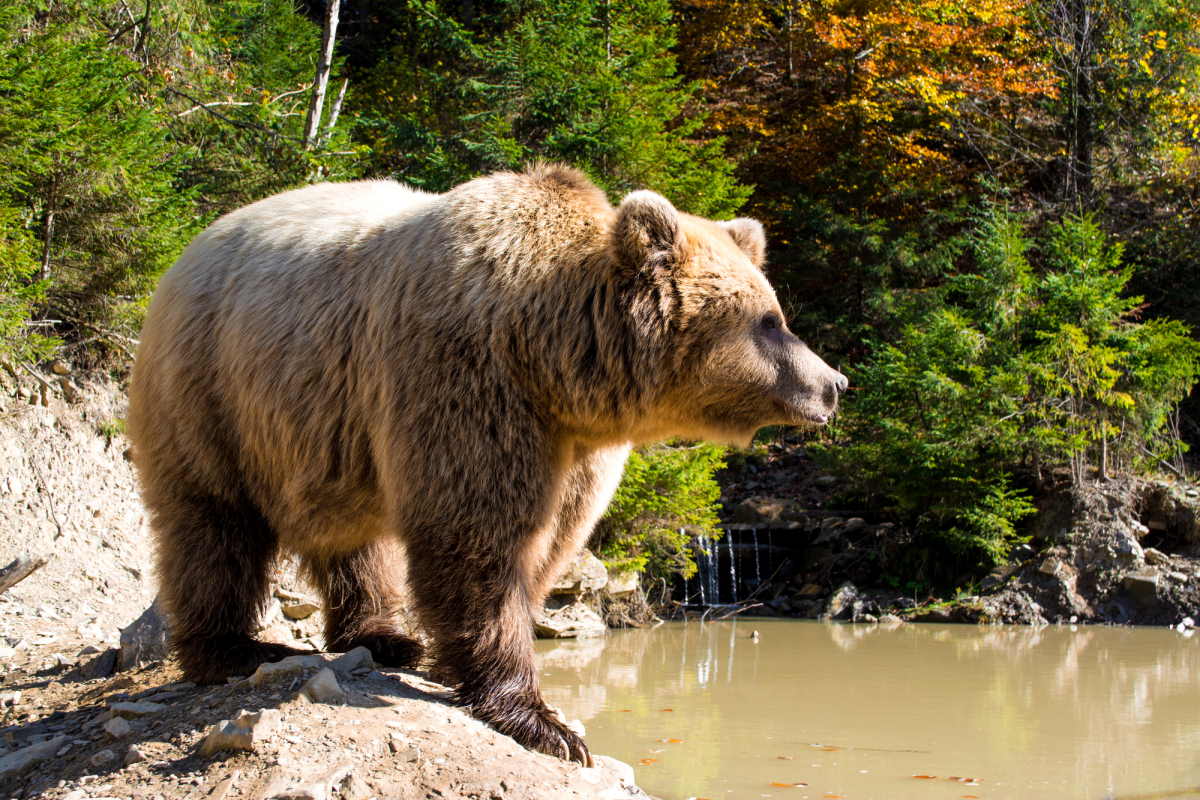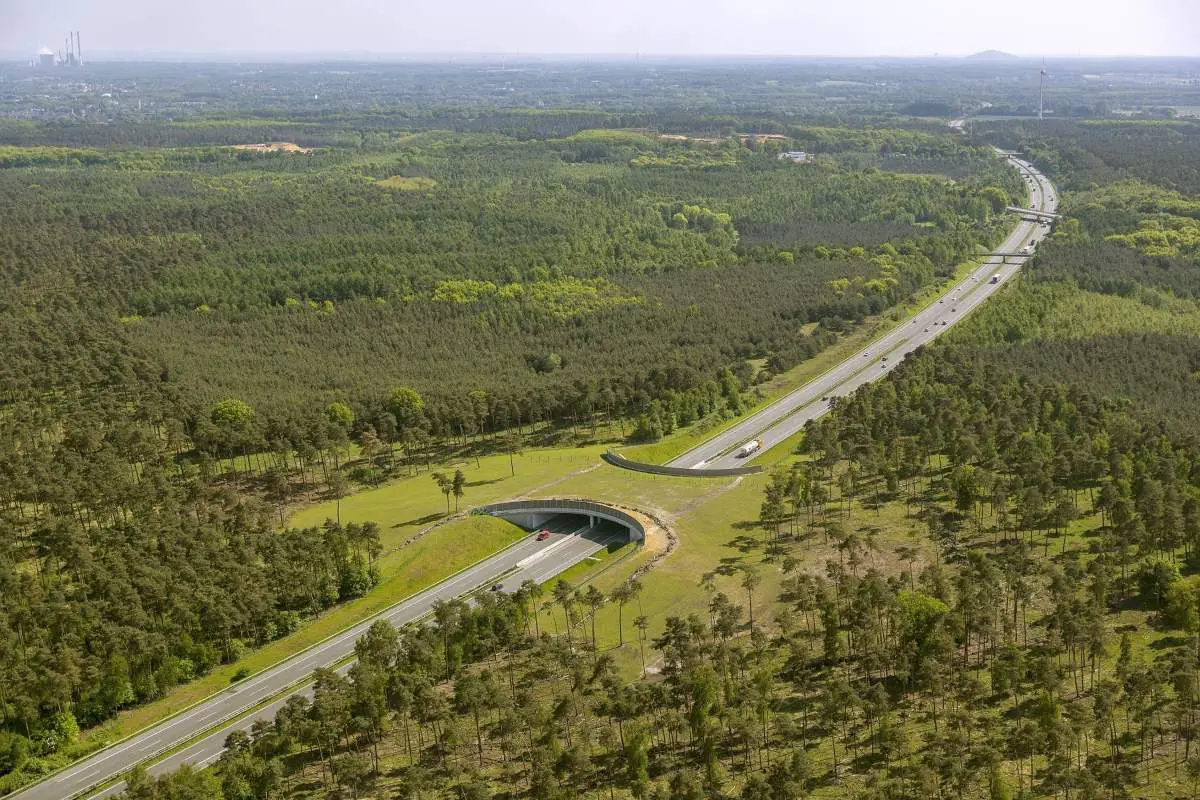Explore 20 fascinating grizzly bear facts, from their habitat and diet to their physical characteristics and conservation status. Get a closer look at these majestic North American brown bears!
The grizzly bear (Ursus arctos horribilis, horribilis means “horrible” in Latin) is a very large brown bear living in North America. It is also known as the North American brown bear (because is a North American subspecies of the brown bear) or simply grizzly.
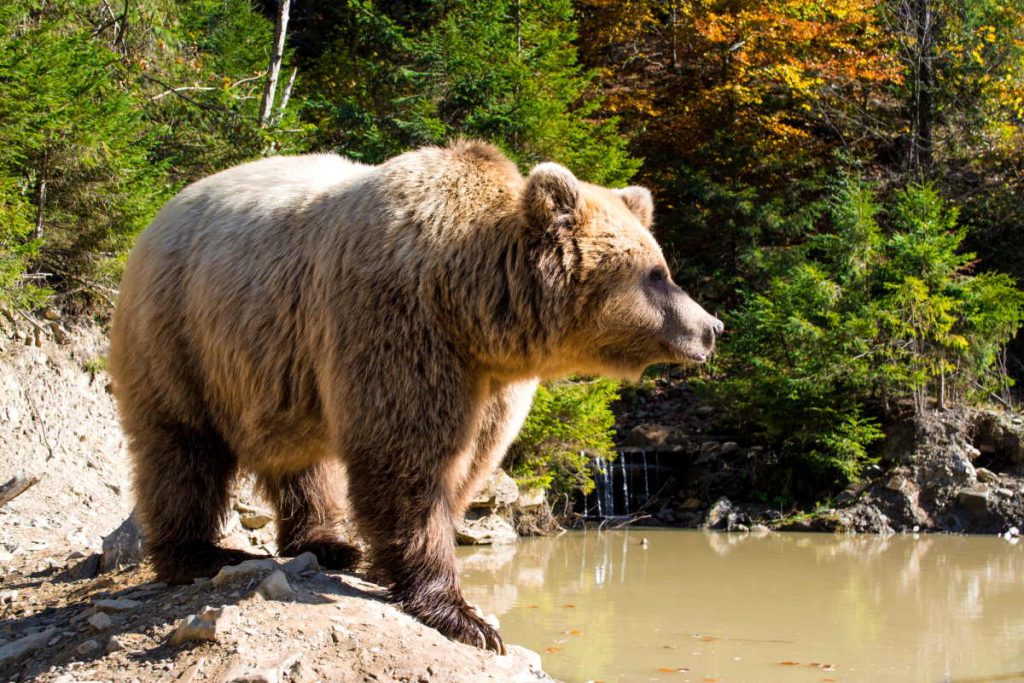
20 Most Amazing Grizzly Bear Facts
1. “Grizzly” meaning
American explorers Meriwether Lewis (August 18, 1774 – October 11, 1809) and William Clark (August 1, 1770 – September 1, 1838) first described it as grisley, which could be interpreted as either “grizzly” (i.e., “grizzled”-that is, with grey-tipped hair) or “grisly” (“fear-inspiring”, now usually “gruesome”).
The modern spelling supposes the former meaning.
The American zoologist and naturalist George Ord (March 4, 1781 – January 24, 1866) formally classified it in 1815 as U. horribilis, not for its hair, but for its character.
2. Grizzly bears are huge
Adult female grizzly bears usually weigh between 130-180 kg (290-400 lb), while adult male grizzlies weigh 180-360 kg (400-790 lb) on average.
When they stood, their average total height is 198 cm (6.50 feet), with an average shoulder height of 102 cm (3.35 feet) and hindfoot length of 28 cm (11 inches).
But, occasionally, huge male grizzlies have been observed, whose size greatly exceeds the average. 3 meters (9.8 feet) tall male grizzlies on their hind legs have been reported, for example. A bear of this size may weigh 680 kg (1,500 lb) and can be up to 1.5 meters (4.9 feet) at the shoulder.
The grizzly bear is the fourth-largest in the world, after the Polar bear, the Kodiak bear, and the Kamchatka Brown Bear.
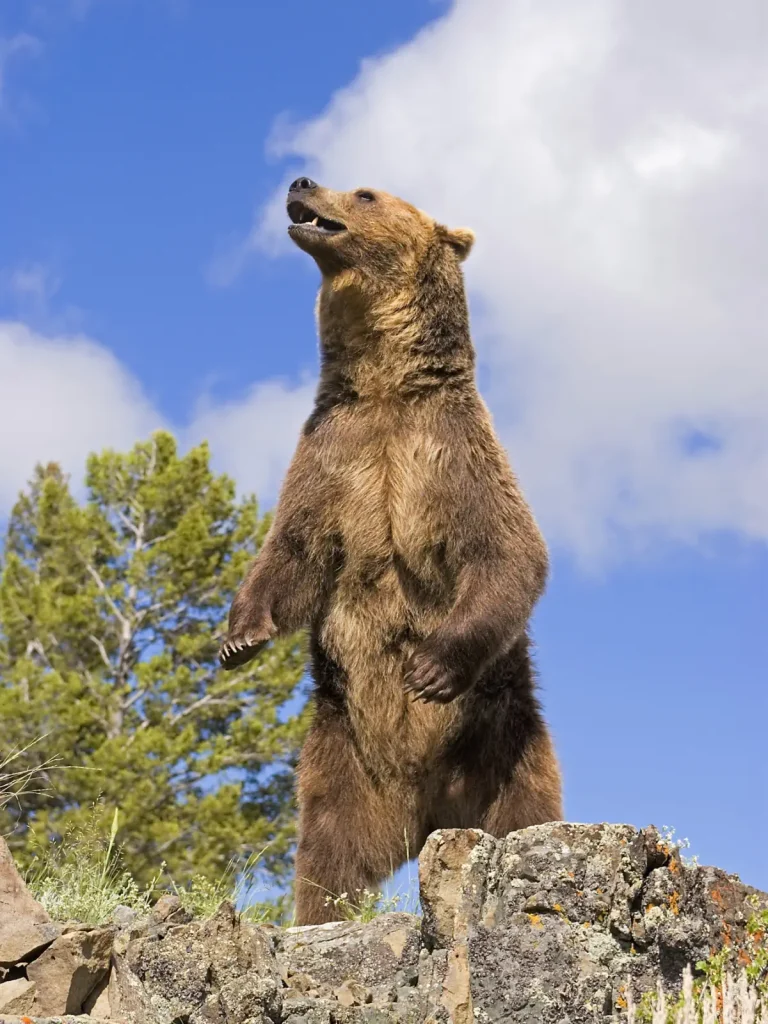
3. But small grizzlies also exist
In some places, grizzly bears can be surprisingly small. For example, on the eastern slopes of the Alberta Rookies, a mature grizzly bear can be as little as 250 lbs (113 kg) in the spring. This is even smaller than the black bears in the area.
4. The biggest grizzly bear on record has been found in Alaska
Like other big animals, you can see a lot of “big fish” stories about grizzly bears.
Perhaps the most famous one is a 2001 report of a very huge grizzly bear from Alaska having an enormous weight of 1600 pounds (725 kg). It was a 12.6-foot tall (384 cm) bear and had a massive head and teeth. Its gigantic paws had impressive claws never before seen.
As the photos circulated around the Internet, the bear grew to “14 feet to the top of his head” – this is 427 cm! And better yet, it became a man-eater (it was not – claims of attacks and kills by the bear have been disputed).
Its actual weight was closer to 1200 pounds (545 kg) with a height of around 10 feet (305 cm) – still enormous. This was is a giant specimen by any measure and until disproved, it holds the record for the largest grizzly bear ever measured.
The famous 1700-pound (771 kg) world-record brown bear which is on display in Anchorage Airport, Alaska, is not a grizzly – it’s a Kodiak bear, which is larger species than grizzly.
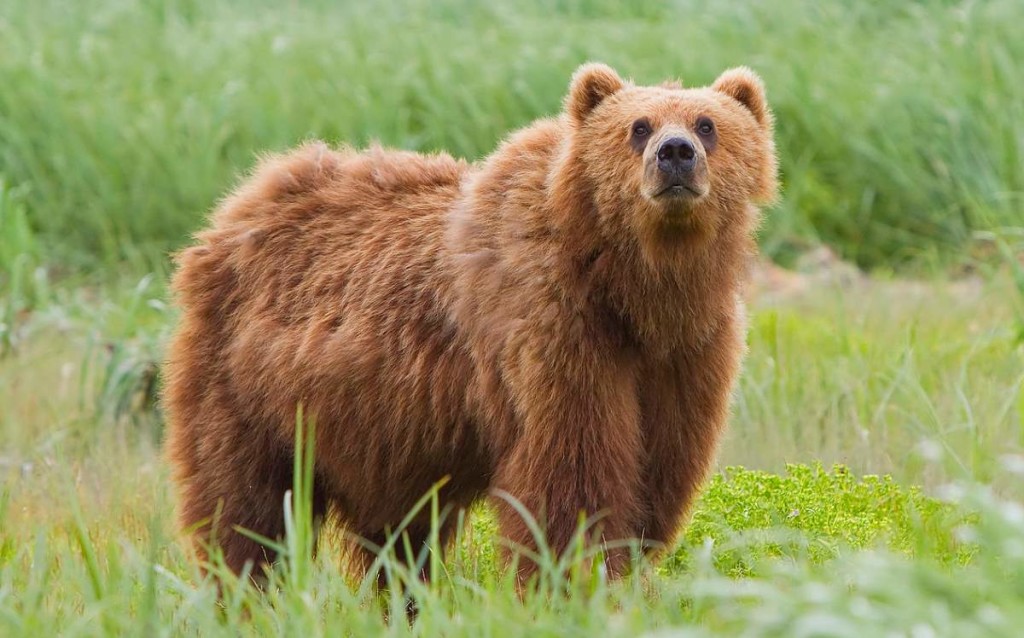
Related: Amazing Kodiak bear facts
5. They have big claws
Their front claws can be up to 4 inches (10 cm) in length, as long as human fingers. They are adapted for digging.
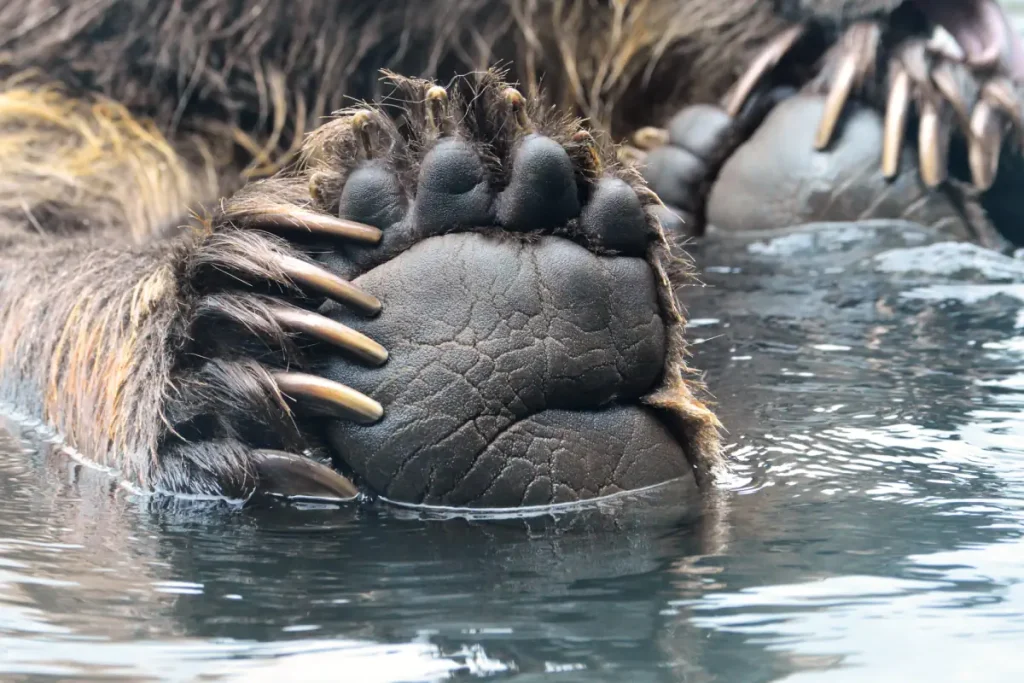
6. Grizzly-polar bear hybrids exist
In 2006, testing the DNA of a unique-looking bear that had been shot near Sachs Harbour, Northwest Territories on Banks Island in the Canadian Arctic confirmed that polar bears can breed with brown bears to produce fertile grizzly-polar bear hybrids – which are named the grolar bear, pizzly bear, or nanulak.
Possible wild-bred polar bear-grizzly bear hybrids have been reported and shot in the past, but DNA tests were not available.
According to the WWF (World Wide Fund for Nature), hybrids are usually birthed from polar bear mothers and they are raised and behave like polar bears.
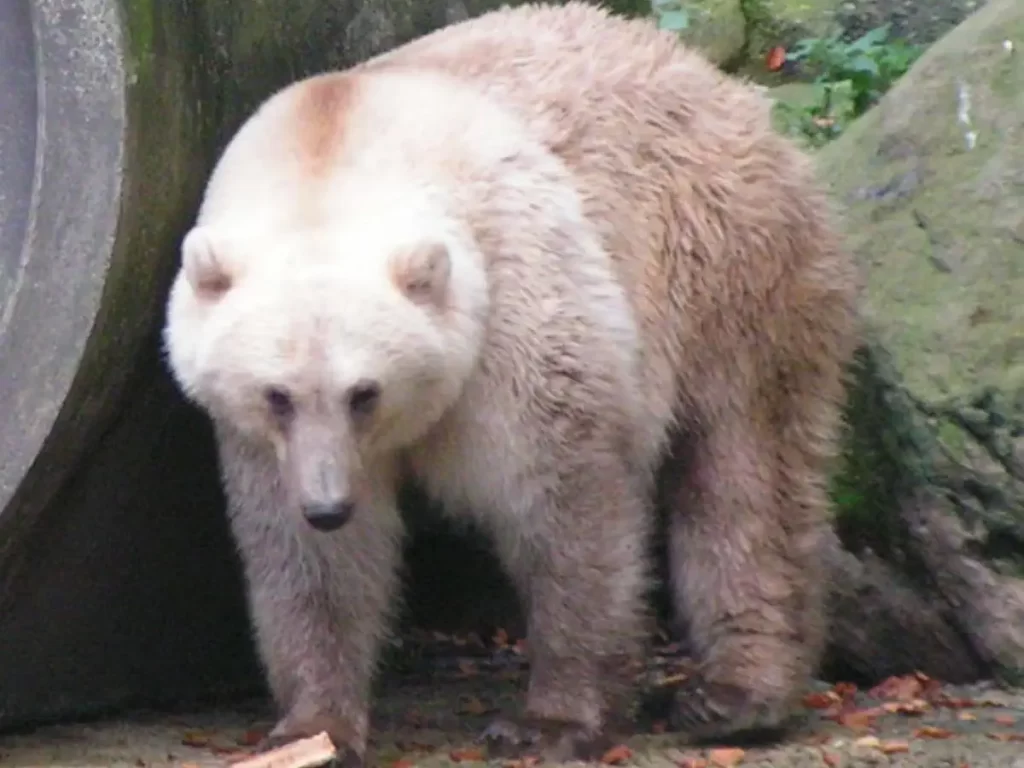
Due to global warming, grizzly bears have been expanding their range across the Arctic in recent decades. So, we can expect to see more grizzly-polar bear hybrids in the future.

Related: 10 amazing Pizzly Bear facts
7. Grizzly bears usually socially dominate the polar bears
Despite being smaller than polar bears, grizzlies socially dominate them. They have been observed displacing (and even eating [source]) polar bears (and black bears) when these species interact with each other.
Polar bears are larger than grizzly bears and have more powerful paws, but grizzly bears are robust, more aggressive, and have excellent bone structures as compared to polar bears.
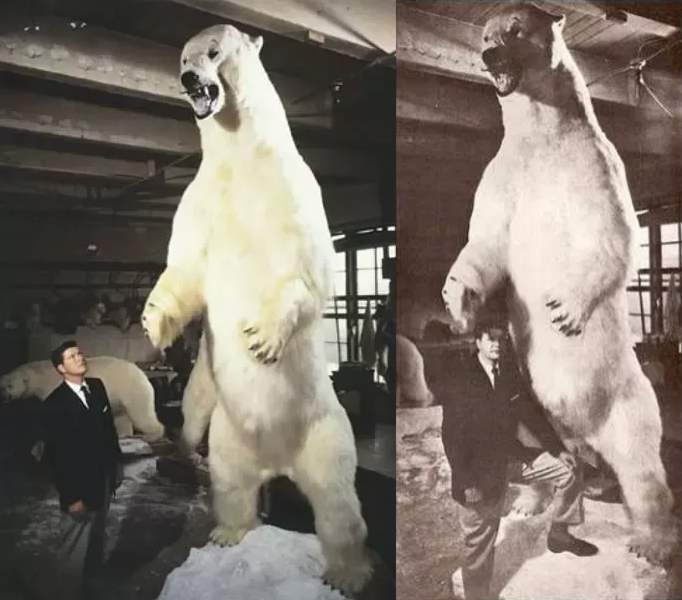
Related: 20 amazing Polar Bear facts
8. Grizzlies are omnivores
They eat both animals and plants. But, like pandas, they have the digestive system of carnivores, so they are classified as Carnivora, despite plants making up a large portion of their diet, with some estimates as high as 80-90%. They eat whatever they find – pine nuts, berries, and even grass.
They can eat up to 90 lbs (40 kg) of food each day.
Video: A big female grizzly bear eating grass.
9. They are both hunters and scavengers
Grizzly bears usually scavenge on carcasses left behind by other predators – or sometimes they steal them. They are very opportunistic feeders and usually eat what they can find – fish, birds, eggs, etc.
They have been known to prey on large mammals, such as moose, elk, caribou, deer, bighorn sheep, bison, and even black bears. They are more likely to take calves and injured individuals rather than healthy adults, though.
10. They are apex predators
Which means they sit on top of the food chain, without natural predators.
11. Grizzly bears don’t always hibernate
In cold climates where the food sources are scarce in winter, grizzly bears hibernate for 5-7 months each year. But, if the climate is warm and/or food is very plentiful year-round, they don’t hibernate, for example, the California grizzly.
12. Female grizzlies live longer
The average lifespan of females is 26 years, while males have an average lifespan of 22 years.
Females live longer because, unlike males, they do not engage in seasonal breeding fights.
Captive bears tend to live longer, like other wild animals.
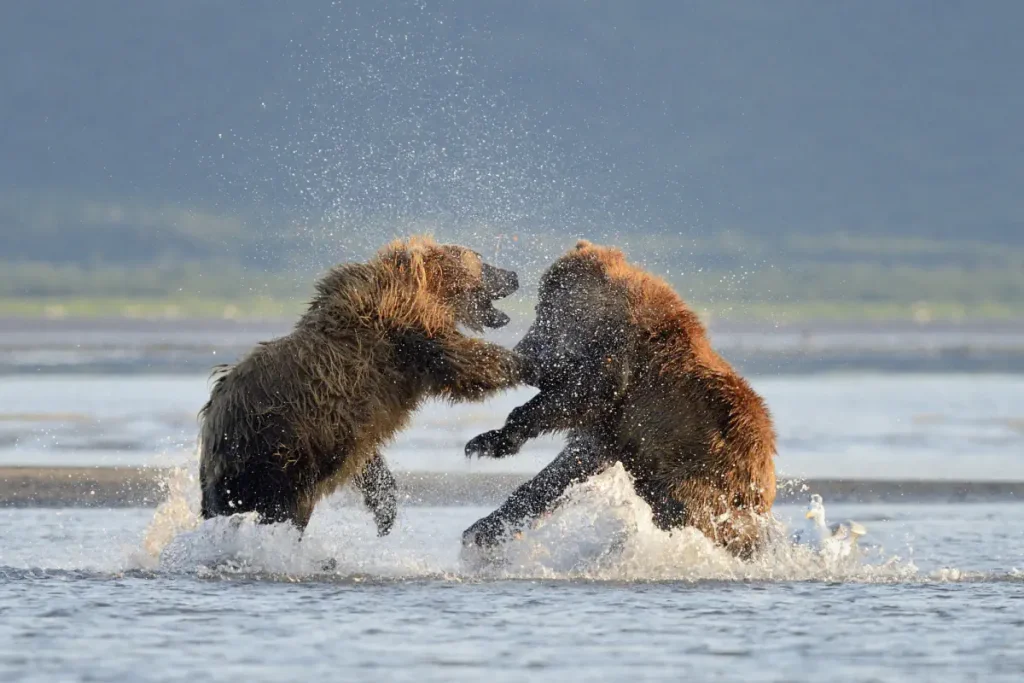
13. They usually avoid contact with people
Like almost all wild animals, grizzlies usually avoid contact with people. Most grizzly bear attacks result from a bear that has been surprised at very close range, especially if it has a supply of food to protect, or female grizzlies protecting their offspring. A sow is very aggressive and will attack if she thinks she or her cubs are threatened.
They rarely actively hunt humans. But, unprovoked attacks still can occur, though rare.
14. They are solitary animals
Grizzlies are usually solitary, though in coastal areas, during the salmon spawn, they can be seen gathered around streams, lakes, rivers, and ponds.
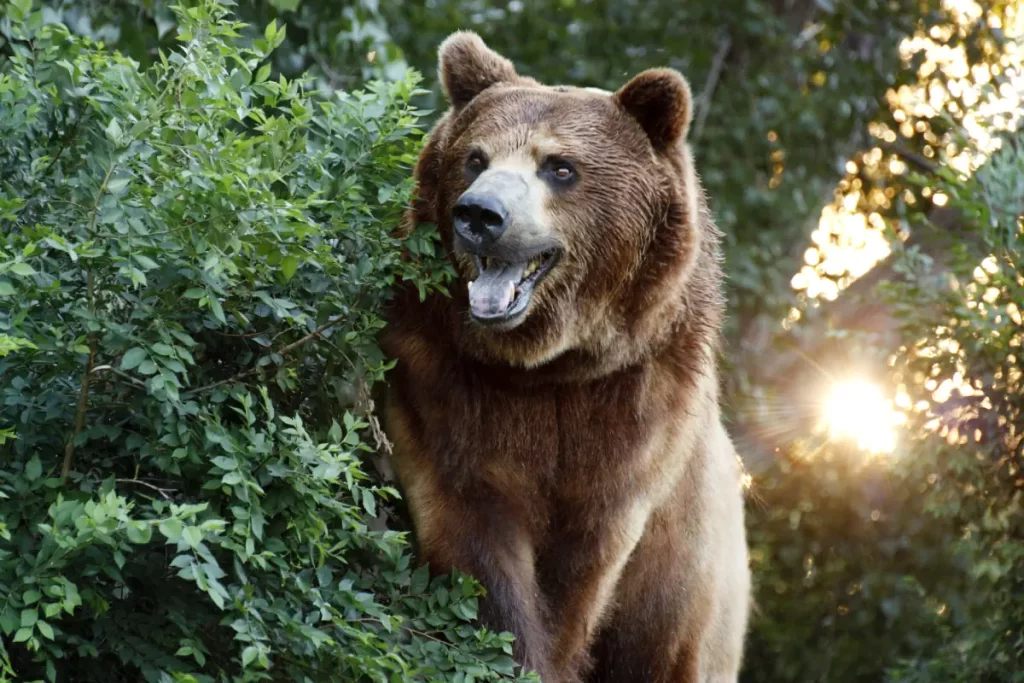
15. Grizzlies have one of the lowest reproductive rates of all terrestrial mammals in North America
Unlike most animals, grizzly bears do not reach sexual maturity until they are at least five years old. Furthermore, once the young leave or are killed, depending on environmental conditions (food resources, climate, threats, etc), females may not produce another litter for three or more years.
They have also a long gestation period – approximately 180-250 days.
The mother cares for her cubs for up to two years. During this time, she does not mate.
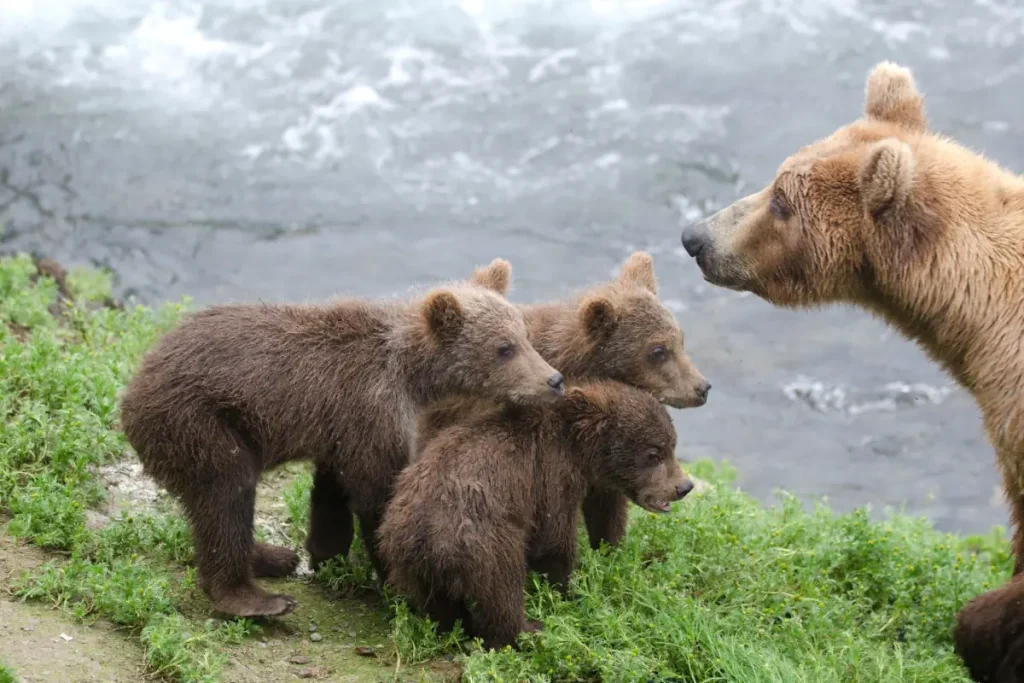
16. They are fast!
Despite their enormous size and bulky build, grizzly bears can run at 30 miles an hour (48 km/h).
They can do it up hills, downhills, or along a slope. It is a myth that bears can’t run fast downhill.
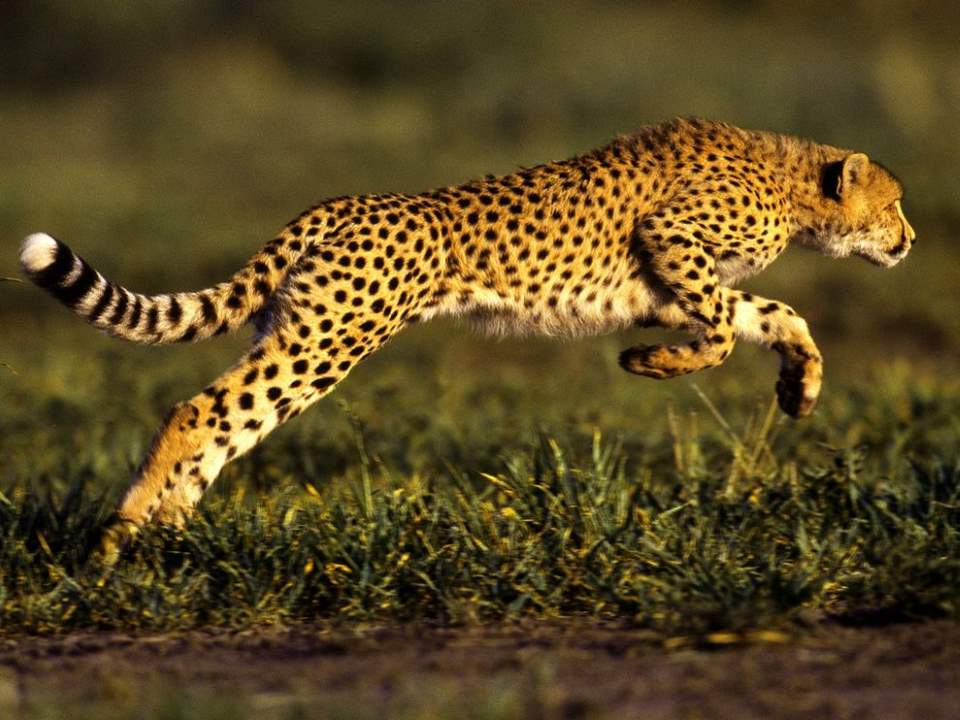
Related: The fastest land animals
17. They are not good climbers
As explained above, their long and powerful claws are adapted for digging, not climbing.
18. They have a notable muscular hump on their shoulders
A pronounced muscular hump appears on adult grizzlies’ shoulders. This is one of the most important identifiers of a grizzly bear – black bears do not have this hump. A grizzly bear can also be identified by its rump, which is lower than its shoulders; a black bear’s rump is higher than its shoulders.
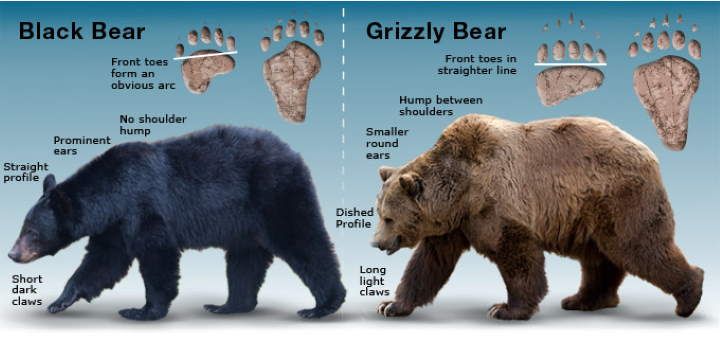
19. They have a strong sense of smell
Grizzly bears have a strong sense of smell and they use it to locate the kill.
Contrary to myths, their eyesight is not poor.
20. They are considered a conservation success story
Thanks to conversation efforts, now there is more than five times the number of grizzly bears than there were in 1975. Their population is between 1,400 to 1,700 in the contiguous U.S. But they aren’t completely safe just yet (see below).
Some not-so-amazing grizzly bear facts
- The grizzly bear is listed as threatened in the contiguous United States and endangered in parts of Canada.
- The most common cause of the death of adult bears is [you guessed it]: humans. A state-run study in northwestern Montana from 2004-2014 estimated that humans caused 71 percent of independent grizzly mortalities.
- Increased human-bear interaction has created “problem bears” – bears positively associate humans with food. These “problem bears” usually end up getting killed. That’s why some signs say “Do not feed the bear. A fed bear is a dead bear”.
- Population fragmentation of grizzly bears may destabilize the population from inbreeding depression. Divided wildlife populations into smaller ones cause a “genetic bottleneck” that resulted in inbreeding, which detrimentally impacts species’ survival.
- Most grizzly cubs die in their first year of life. Young grizzlies often won’t make it to adulthood due to natural causes. While humans are the biggest cause of the deaths of adult bears, it’s less common for cubs.
Sources
- Grizzly bear on Wikipedia
- Grizzly Bear Facts (Ursus arctos horribilis) on Thoughtco.com
- “7 Little Known Grizzly Bear Facts” on bearsmart.com
- “We found grizzly, black, and polar bears together for the first time” on The Conversation
- “Life on the Brink: The Unsettling Numbers About How Grizzly Bears Die” on the Vital Group Foundation website
- Grizzly bear on the National Geographic website
- “Debunking the myth of a ‘1600-pound man-eating grizzly’ from Alaska” on the Anchorage Daily News website
- “Grizzly Bear” on the Bear Life website
- Moon Landings: All-Time List [1966-2025] - February 2, 2025
- What Is Max-Q and Why Is It Important During Rocket Launches? - January 16, 2025
- Top 10 Tallest Rockets Ever Launched [2025 Update] - January 16, 2025
